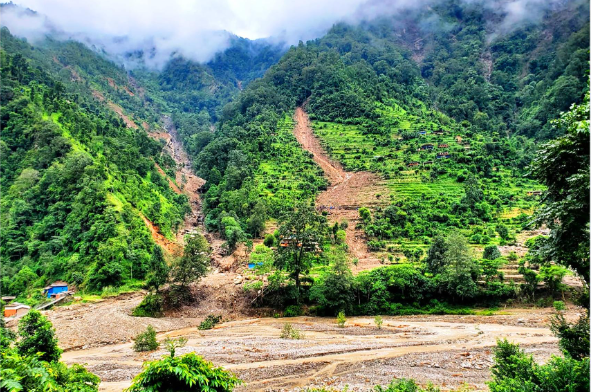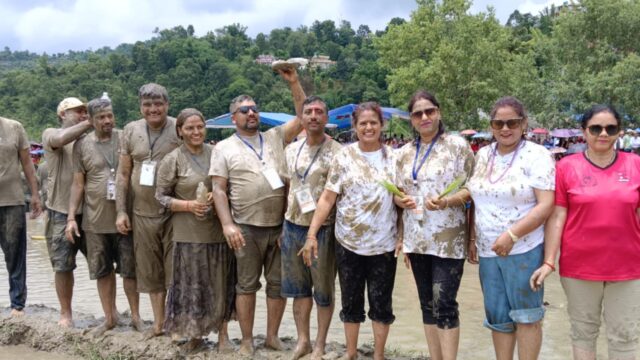In the past, many villages in Bajhang lacked road access, but today, virtually no settlement remains without road connectivity. This transformation has provided significant convenience to residents. However, the rapid and sometimes disorganized road construction has also led to numerous challenges, including environmental degradation and increased risk of landslides.
Local authorities allocate substantial budgets annually for road construction across the 10 municipalities in Bajhang. However, the hasty development of motor roads in steep and environmentally sensitive areas has led to significant environmental concerns. For instance, during the monsoon season, poorly constructed roads often exacerbate flooding and landslides. On July 22, a devastating flood and landslide in Badigad Rural Municipality resulted in 11 fatalities, numerous injuries, and the displacement of approximately 80 households. The disaster has been linked to the lack of proper road planning and construction.
The situation is not unique to Badigad. The area around Nisikhola Rural Municipality’s Huldi village has faced high landslide risk for years due to poorly planned roadworks. Villagers are forced to live under constant threat from landslides, highlighting the need for more considerate road planning.
Throughout the district, municipalities such as Dhorpatan, Jaimini, and Galkot have experienced significant damage from landslides this year. Many of these landslides have occurred along roadsides, where poorly engineered roads have caused further environmental damage. Prem Bahadur Khatri from Galkot noted that haphazard road construction not only ruins the natural beauty of villages but also negatively impacts the environment by depleting water sources and destroying local heritage.
Khatri criticized the local authorities for focusing excessive budgets on road construction without ensuring quality and longevity. He mentioned that many roads, constructed hastily, become impassable during the monsoon, leading to severe inconvenience for residents.
In response to these challenges, Galkot Municipality has started efforts to improve the quality of rural roads. Since the municipality’s establishment, 330 kilometers of rural roads have been constructed, and 157 kilometers of new roads have been added in the last seven years. The focus is now on upgrading existing roads rather than opening new tracks unless necessary.
Galkot Municipality spokesperson Him Bahadur Bhandari acknowledged the complaints regarding the previous road construction efforts and emphasized that current plans involve improving the quality and sustainability of roads. He assured that future roadworks would prioritize environmental considerations and better engineering practices.
While road development has undeniably enhanced connectivity and convenience in Bajhang, the accompanying environmental and safety issues underscore the need for more thoughtful and sustainable planning. As local authorities continue to invest in infrastructure, addressing these concerns will be crucial for ensuring that road construction benefits residents without compromising their safety and the environment.






